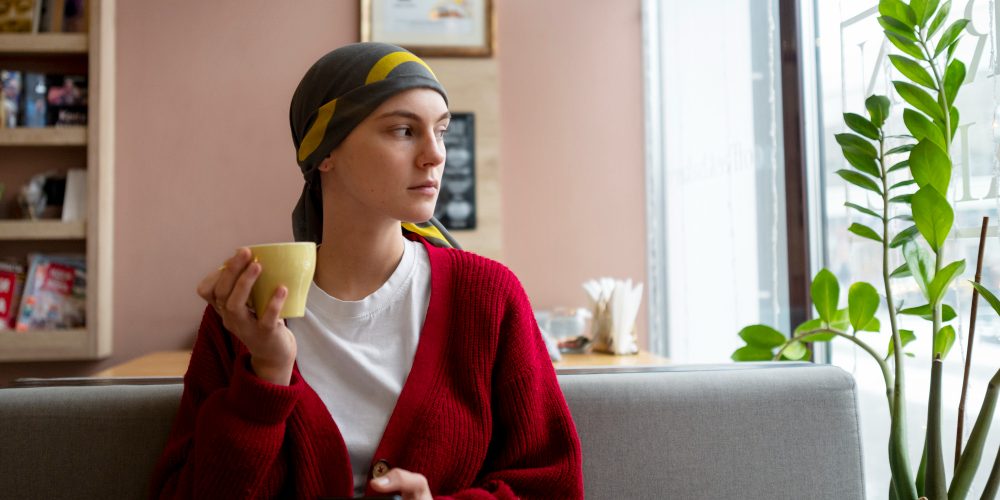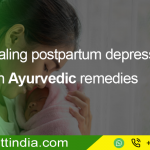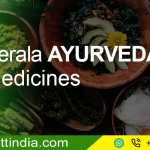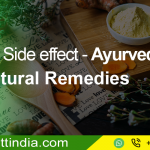Because of the modernisation of our diet and lifestyle, more people are affected by cancer. Traditional nutrition, herbal recipes, and Ayurvedic treatments like Abhyanga (herbal oil massage), Shirodhara (oil/medicinal buttermilk, medicated milk over forehead), enable people regain their regular lives after being affected by cancer on a physical, mental, and spiritual level. Reaching this goal involves using techniques like yoga, meditation, breathing exercises (pranayama), a good diet, and a routine following a minor cleansing.
The billions of cells that make up our bodies grow in a well-organized, predetermined manner to maintain proper cellular growth and function. In our bodies, damaged or old cells die and are replaced by new ones. Our bodies’ cells will behave abnormally if this regular cycle is disturbed, which is one of the key factors in the development of cancer.
We at Matt India Ayurveda think that Ayurvedic cancer treatment is beneficial, and current research studies also support our ability to offer patients highly effective, patient-centered remedies.
Tumors and cancers are referred to in Ayurveda by the names Granthi (non-cancerous tumours and cysts) and Arbuda (cancerous tumours and cysts) (malignant tumours or cancer). Non-malignant growths are brought on by an imbalance in one of the three fundamental doshas—Vata, Pitta, or Kapha. Malignant tumours and illnesses, on the other hand, are Tridoshaja, which means they involve all three doshas. The most frequent reasons include exposure to carcinogens, stress, poor diet, genetic predisposition, and radiation. Tumors and cysts that have not healed due to lack of treatment run the risk of becoming cancer.
Three objectives are achieved by the integrated approach used in ayurvedic treatment: addressing the root cause, reducing comorbid symptoms, and enhancing quality of life.
Sirodhara
Shirodhara is a procedure where a specific fluid is allowed to flow over the forehead from the Dhara vessel at a specific height for a predetermined period of time. Regarding the treatment, the fluids are considered. The majority of the time, ayurvedic herbal oils or therapeutic fluids like buttermilk or milk are used. By removing ama (toxins) from the body, this therapy resolves the issues of the host. Shirodhara therapy assists you in better managing your stress levels while receiving cancer treatment.
The hair and scalp are given space for the oil to circulate. Later, it is included into massage. Typical massages are brief and simply serve to ease tension and soreness in the muscles. Shirodhara, on the other hand, is a miraculous massage that removes dead skin cells, calms physical stress, corrects Doshic imbalances, removes toxins, eases muscle tension, and ensures that the body’s fluids are flowing normally. Shirodhara can aid patients in regaining their mental health by addressing worry, despondency, and stress in addition to these physiological changes.
Taila Dhara or Sneha Dhara
Sneha or Taila is the name for oil. Taila or ghee is an ayurvedic herbal oil that Sneha Dhara uses. Ayurvedic practitioners mix herbal oils with other essential oils. Lakshadi and Dhanvantaram oils effectively treat the Pitta and Vata doshas. Warm oils are used to treat the Vata, Kapha, and Pitta doshas, whereas cold oils are used to treat the Pitta dosha (oil at room temperature). Make use of Chandan Bala Lakshadi oil for Pitta imbalances.
Ksheera Dhara or Dugdha Dhara
Dugdha or Ksheera are terms used to describe milk. Milk that has been infused with herbs is used to make dugdha dhara. After being heated to a low temperature, the medicated milk is used in the treatment. Unbalances in the Vata and Pitta Doshas are remedied by it. Therapy can help with headaches, stress, anxiety, insomnia, and mental exhaustion.
Takra Dhara
Buttermilk produced by diluting curd is known as takra. Buttermilk has herbal infusions added to it. It is a form of treatment for those with vata dosha imbalances. This drug can be used to treat anorexia, fatigue, nervous drowsiness, and lack of energy. Takra Dhara can help to relieve the symptoms of aggravated Vata Dosha, which include burning, cracking, and itching of the foot.
How Shirodhara works?
The nerve system is strongly affected by shirodhara. Vata Dosha is balanced, the nervous system is calmed and strengthened, suppressed emotions are released, and the mind is cleansed. Ayurvedic medical professionals claim that this therapy can be used to reach higher states of awareness.
Shirodhara stimulates specific points on the head, increasing blood flow. Through massage, oil or other fluids can reach deeper layers of the scalp, causing a soothing sensation and relaxing the peripheral nerves in the forehead. Massage can help with migraine relief.
Lukewarm milk or herbal oils dilate blood vessels, which benefits the body’s circulatory system. An improvement in blood circulation can lower blood pressure.
Pranayama Yoga
A successful intervention for cancer patients receiving chemotherapy was discovered to be yoga breathing. Anxiety, mental health, and sleep issues can all be helped by pranayama. There is evidence that practising yoga can reduce the side effects of chemotherapy and enhance quality of life.
The Sanskrit word “Prana” means “breath” or “energy” in the body. Breath control is referred to as pranayama. On a deeper level, “ayama” means control, while “prana” refers to the pranic energy that gives life or “life force.” Literally translated as “breath control,” pranayama.
One can control the pranic energy cycles with pranayama and cultivate a healthy body and mind. According to Patanjali’s Yoga Sutras, breath-holding is a key practise for achieving Samadhi. He explains pranayama as a method for reaching higher awareness states. The eight various types of pranayama, or breathing techniques, that help the body and mind stay in shape, are also covered by hatha yoga.
The five types of prana—prana, apana, vyan, udana, and samana—are in charge of various pranic functions in the body. The two that matter the most are prana and apana. Apana flows below while Prana moves upward. A healthy body and mind are produced by pranayama practise, which balances the actions of these pranas.
Panchakarma
Yuktivyapashraya recommends Panchakarma. There are five processes in panchkarma: oilation, fomentation, and acupressure (these are preparatory stages). The next five major purifying methods are Vaman, Virechan, Vasti, Nasya, and Raktmokshan. The likelihood of the sickness returning is well understood. Vata, Pitta, and Kapha are helped to correct via panchkarma. In the end, panchkarma involves cleansing and purifying each and every bodily component.
Rapid recovery from the side effects of post-cancer treatment has been demonstrated to be significantly impacted by ayurvedic cancer treatment. Kerala has seen a boom in ayurveda. Kerala continues to do it, though. Ayurveda has come to be associated with Kerala. From the ancient scriptures to the present ailments and flooding in Kerala, people have been looking for cures. One such modern sickness for which individuals are unable to locate an effective treatment is cancer. Ayurvedic cancer treatment in Kerala is currently stealing the show and has become the destination for many people from other countries looking for better treatment.
Cancer can be a fatal illness, but Ayurveda offers the greatest approach to live a quiet life and treat the condition naturally. Don’t forget the proverb that says “health is wealth” since health is priceless. Make an appointment right away to receive care from the top care facility in Kerala.
Tags : Panchakarma, Rejuvenation, Ayurveda Packages, Ayurveda Treatment in India, Ayurveda Rejuvenation in India, Ayurveda Therapy in Kerala, Shirodhara therapy








